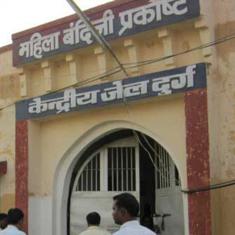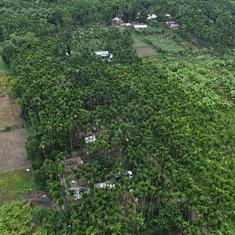India is a nation without a national language. It is a nation with two official languages, one of which is not even an Indian language. But this is hardly surprising considering India’s unique relationship with language diversity. After the island nation of Papua New Guinea with 1840 documented languages, India is the most linguistically diverse country on the planet. According to Ethnnologue, three major language families account for the majority of Indian languages: Sino-Tibetan (~150 languages, 1per cent of speakers), Indo-European (~140 languages, 77 per cent) and Dravidian (84 languages, 20 per cent). The noted linguist Murray B Emeneau described India as a single linguistic zone: “an area which includes languages belonging to more than one family but showing traits in common…” This parallels the ways in which other cultural elements (literature, food, dress, etc,) also interact, meld and evolve over time. Indeed this type of conceptualising allows us to understand how an incredibly diverse country like India can still have a unifying cultural ethos.
The history of languages is the history of India
Over 97 per cent of the population of India speaks a language from one of two language families: Indo-European or Dravidian. The history of these two languages is the history of India. The sustained interaction between these two language communities truly shaped the cultural heritage of premodern India. Sanskrit is the pre-eminent classical language of India, but that is not the full picture. Classical Indian literature also includes Prakrit literature and Tamil literature. Prakrit is a general term for a number of ancient Indo-European languages which maintained a closeness to the Sanskrit tradition. They were the precursors of today’s modern north Indian languages. Old Tamil, on the other hand, is a Dravidian language with a completely independent literary tradition, wholly unique to the subcontinent. Indeed, what makes Sanskrit distinct from her many Indo-European cousins is the influence of India’s indigenous Dravidian culture. In fact, what makes Sanskrit Sanskrit is Tamil.
In ancient times, and even still today, Sanskrit is viewed as sakala-bhasha-janani, the mother of all languages. Even Tamil and Telugu pandits believed that the Dravidian languages were descendants of Sanskrit. But in 1816, a British civil servant named FW Ellis put forth the Dravidian Proof which clearly showed that the South Indian languages of Tamil, Telugu, Kannada and Malayalam were all related to each other, and all derived from a common source that was not Sanskrit. Even for some Indian scholars this was a shocking claim. The salient point is that although Sanskrit and Tamil are genetically unrelated, they are inextricably bound to each other because of their long history of mutual influence. Thus, although they have disparate origins, Sanskrit and Tamil share over two millennia of linguistic and cultural cross-fertilisation.
The oldest Tamil literature, known today as Sangam poetry, is over two thousand years old. This vast corpus is the first great body of secular poetry written in India. The poems reveal an incredibly high degree of literary sophistication and aesthetic beauty with a rich intellectual tradition of its own. The poems also give us a window into an ancient Indian culture which predates Sanskrit influence. By the nineteenth century general knowledge of the Sangam tradition had largely faded. It was only in 1880 that a brilliant young UV Swaminatha Iyer took up a new teaching position in Kumbakonam where he begam combing through old libraries: “I began to search among bundles of old palm leaf texts…the wealth of content of those poems in the caṅkam texts appeared to me ‘vaster than the earth, higher than the skies, and deeper than the waters of the ocean.’” Iyer’s story of discovery illustrates how a great tradition like Tamil progresses through repeated cycles of loss and recovery, of forgetting and remembering.
The uniqueness of the Tamil language
The timeless immediacy of the poems may be due to the nature of the Tamil language itself, for it is both ancient and modern. Unlike any other Indian language, Tamil is both a classical language and a modern spoken language. As AK Ramanujan observed, it’s the “only language of contemporary India which is recognizably continuous with a classical past.” Today we are in another moment of cultural awakening and pride in one’s heritage. It is a chance to return to the Indian classics in Tamil, Sanskrit and various Prakrits. It is an opportunity to better know ourselves, our history, and our neighbors.
On the first day in all my classes, I have the students go around the room and briefly introduce themselves. Typical responses would be, “Myself Swati. Basically we’re Gujarati but I grew up in Hyderabad,” or “Myself Manu. Basically… it’s difficult, mother Punjabi, father Tamilian, moved around but settled in Dubai.” And so it would go on and on, everyone with a unique story, and never a soul with just one identity. The key word that everyone used was “Basically…” This was like saying “It’s really complex, but let me simplify it.” If India were a student in class, she might say “Myself Bharat. Basically…mother Tamil, father Sanskrit. My family is always moving, I’ve lived everywhere.”
As AK Ramanujan suggested, Sanskrit is India’s father tongue, her public language, while Tamil is her mother tongue, the language of the home. India’s true genetic code is Tamil mother, Sanskrit father. And just as each of us carries within ourselves multiple identities, so too does India encompass a plurality of worlds within herself. The true lesson of India’s remarkable literatures is that a people can be united without recourse to a single language, religion or creed.










